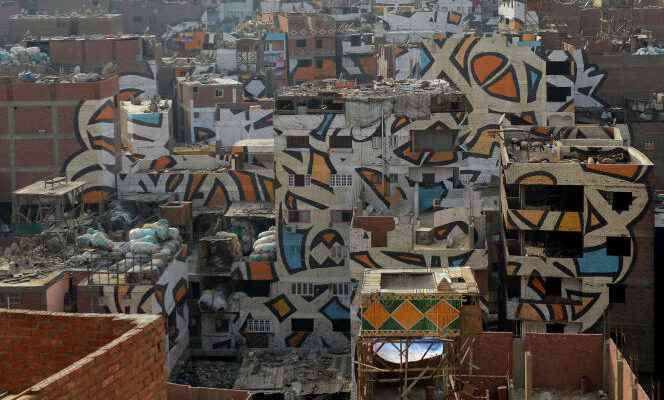Rodrigo Diaz de Vivar (1043-1099) was one of the great warlords of Spain during the Reconquista, serving Catholic kings as Muslim sovereigns, before establishing his own stronghold in Valencia. His bravery and charisma were so renowned that he was nicknamed “El Cid” the Hispanicized form of “lord” in Arabic. His gesture inspired, among others, Corneille, in 1636, his tragicomedy The Cid, before Charlton Heston lent him his features, in 1961, in a film by Anthony Mann.
At the very end of the last century, the young Faouzi Khlifi, born in 1981 in Chesnay (Yvelines), was so impressed by Corneille’s piece that he decided to take the artist name “eL Seed”. He then deepened his mastery of the Arabic language, he, the son of a worker who came to work at Renault in Boulogne-Billancourt from the Tunisian oasis of Gabès. Calligraphy became his passion, in parallel with his studies at Essec, from which he graduated to go, in 2006, to work in New York, then in Montreal. His job as a consultant, very well paid, left him dissatisfied, to the point of becoming eL Seed full-time and developing a style of monumental calligraphy now recognizable among all.
“Love is the miracle of civilizations”
In 2012, eL Seed seized the 57 meters of gray concrete of the minaret of the mosque of Jara, in Gabès. He calligraphs this quote from the Koran which celebrates diversity through exchange: “O you men! We created you from a male and a female. We have formed you into peoples and tribes so that you may know one another “. Soon after, he embarks on a real road-trip in Tunisia deep, painting about twenty walls from north to south of the country. From these ” lost walls from which he draws his first book, he hopes “convince people to return to Tunisia to discover a heritage that is both present and lost “.
In 2013, he intervened, with other artists, on the Paris 13 Tower, before creating, the following year, a monumental fresco on one of the facades of the Institute of the Arab World (IMA). He chooses to transfigure in Arabic calligraphy a quote from Stendhal: “Love is the miracle of civilizations. »
This is not the first time that eL Seed has illustrated the universality of the Arabic language by transposing a text that resonates deeply in the local culture. In 2012, he had painted on the wall of one of the townships of Cape Town this quote from Nelson Mandela: “It always seems impossible until it’s done.” To a resident who asks him why he did not tag this sentence in English, eL Seed replies that it would have been better to transcribe it in Zulu.
You have 54.21% of this article left to read. The following is for subscribers only.
